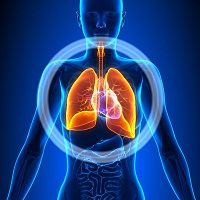Article
Portable Ventilator Could Increase Physical Activity in Respiratory Conditions
Author(s):
It's already well-known that greater activity translates to lower levels of mortality when it comes to chronic respiratory conditions. The latest data indicates that the Non-invasive Open Ventilation (NIOV) device be able to increase physical activity.

It’s already well-known that greater activity translates to lower levels of mortality when it comes to chronic respiratory conditions. The latest data indicates that the Non-invasive Open Ventilation (NIOV) device be able to increase physical activity.
Previous smaller studies showed that the device reduced dyspnea and improved exercise endurance. This new analysis gathered results from a larger participant pool. Neil MacIntyre, MD, a professor of medicine at Duke University in North Carolina, revealed the outcomes at the CHEST 2015 meeting in Montréal, Canada.
“It’s a device that’s meant to unload respiratory muscles,” MacIntyre detailed about NIOV during the presentation. Although it’s been argued how to classify the nasal system, it is not a mask, but more of a hybrid device. Patients have the ability to control it when they feel shortness of breath all while having it hooked on their belt. The device can be powered by compressed air, or any gas, but compressed oxygen was used in this study.
MacIntyre and colleagues hypothesized that the device would support ventilation and reduce the work of breathing, making for better outcomes. Keep in mind that the label indication is that the device is used for chronic respiratory insufficiency (CRI). “Personally, I think this device could work in anyone with chronic lung disease,” MacIntyre proclaimed.
The team studied 16 patients with CRI. “The only intervention was adding this device to their standard care,” MacIntyre explained. Each patient used NIOV for at least six months for several hours each day with the average being 4±7. Medical data from six months before and after the study were collected along with the amount of physician visits, emergency department visits, and intensive care unit (ICU) admissions.
Would there be an improvement in any of the areas with the use of NIOV? Well, we’re about to find out.
Before the implementation of the device, the average number of emergency department visits was 1.9. The analysis revealed that number dropped to 0.6 after using the device. Average days in the ICU also saw a decrease from 7.6 to 1.3. Physician visits had a slight increase from 5.4 to 5.9. The mean chronic obstructive pulmonary disease (COPD) assessment test (CAT) score went from 28 to 12, and the MRC breathlessness scale saw an improvement as well.
“We think this has some important clinical implications,” MacIntyre concluded. The device is different from others because it’s not continuous. In theory it can be used while sleeping, however, that has yet to be studied, but may be the next leg of research.





